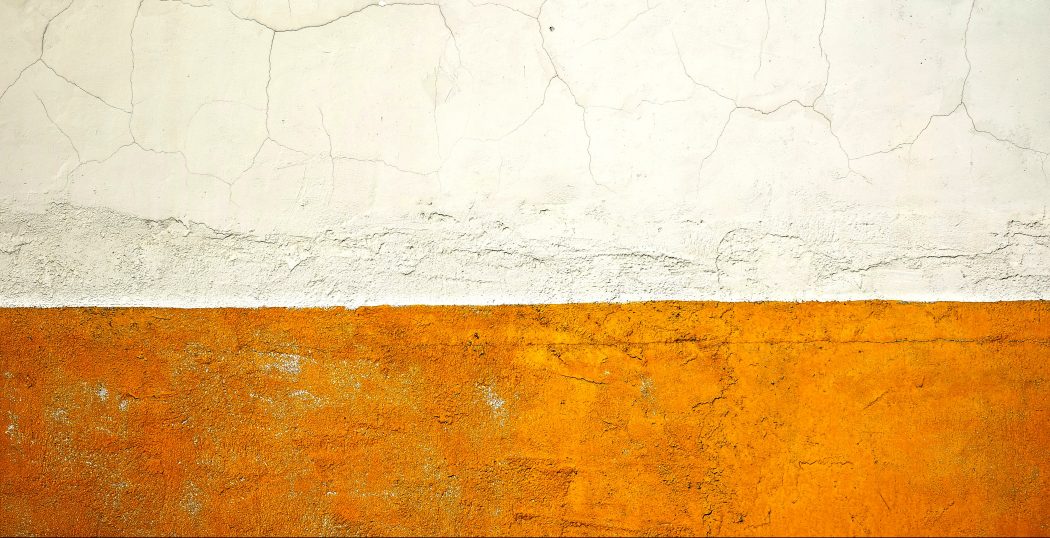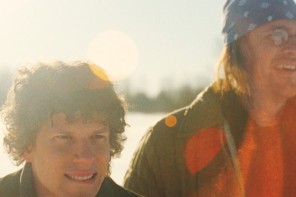Over the past few decades decade, liminality—the study of the passage across boundaries—has become a familiar term in Anglophone theology. In the words of anthropologist Victor Turner, to speak of liminality is to speak of moments of passage in which ‘opposites, as it were, constitute one another and are mutually indispensable’. [1] An archetypal instance of liminality might be the rite of atonement described in Leviticus 16—the process by which Israel’s high priest processed from the world of the people into the presence of the divine. Such a rite could not be possible without an essential opposition between the holy and the common. And so, to affirm the reality of liminality more broadly is to recognize that ‘each individual’s life experience contains alternating exposure to … states and transitions’—‘sacred’ moments when the world seems clear and cohesive and meaningful, and ‘profane’ moments when that clarity seems to dissolve. [2]
This concept, no doubt, has far-reaching usefulness for theology. Not only does it describe the ritual structure of traditional religious practice, it can also describe the life of the religious believer in what Charles Taylor has termed ‘a secular age’ or Zygmunt Bauman has labelled ‘liquid modernity’. To live in a time of rapid technological and ideological transition is to experience a constant pressure toward evolutionary change, one that allows little time to dwell within ‘sacred moments’ before the character of that ‘sacred’ is itself questioned or destabilized. Liminality, in short, has become a ubiquitous fact of life: the boundaries of the sacred feel perpetually unstable.
To my mind, the concept of liminality seems like an especially apt descriptor for the strange power of Mark Rothko’s art.
To my mind, the concept of liminality seems like an especially apt descriptor for the strange power of Mark Rothko’s art. Rothko is best known for his iconic abstract paintings, many of which follow a similar pattern—bold rectangles of colour set off against a field of a different shade. But the most distinctive, and most compelling, dimension of Rothko’s paintings is surely their ethereality. In Rothko’s most famous works, the edges of the central shape are neither sharp nor defined but diffuse into the surrounding colour, evoking a sense of organic emergence or emanation. The effect is arresting: one’s eye is immediately drawn to the boundary between foreground and background, led to ponder where one ends and the other begins.
I’m sure I’ve passed by many examples of Rothko’s work over the years, but the first time I truly saw his paintings was during a trip to the Los Angeles County Museum of Art. I rounded a corner and came face-to-face with White Center, [3] and I found myself immediately transfixed. Here was a painting that was communicating a particular message, not simply expressing a given mood—and it spoke of something that could not be reduced to purely political or social concepts.
Upon reflection, it struck me that Rothko’s famous canvases somehow captured, within the space of a single frame, the age-old tension between being and becoming that has overshadowed Western philosophy since the time of Parmenides and Heraclitus. For subsequent philosophers in the Platonic tradition, that which was unchanging and stable was most divine, over against the material world of change and decay. And the scholarship on liminality suggests that there is a certain universality to that intuition: just as the changeable world of becoming was, for the Greeks, inferior to the stable domain of being, Turner argues that ‘that which cannot be clearly classified in terms of traditional criteria of classification, or falls between classificatory boundaries, is almost everywhere regarded as “polluting” and “dangerous”’. [4]
Rothko’s work is haunting precisely because it captures that tension. In a Rothko painting, a single central shape or form is clearly identifiable as such, but its blurred edges signify the ubiquitous presence of a surrounding void: someday, the central shape will collapse back into the silent dark from which it first emerged. In the instant of that recognition, the viewer is forced to come to terms with a haunting philosophical truth: the experience of transience, of inevitable arising-and-perishing, flickers at the edges of every human creation or endeavour. The process of becoming, a process of destruction and re-emergence and transformation, stops for no one.
Rothko’s own unpublished writings suggest that his work was, indeed, to be understood as a reflection of this universal process. In a collection of essays posthumously published as The Artist’s Reality: Philosophies of Art, Rothko outlined his concept of ‘plasticity’—‘the sense of existence which a painting achieves’, which may be assessed in terms of whether ‘the artist has convincingly imparted the feeling of existence to the picture’. [5]
Faced with the inherently tragic character of change and liminality in an age incapable of affirming any enduring sacred reality, Rothko struggled to formulate a cohesive response. Rothko mournfully speculated that any attempt to overcome human beings’ inherent ‘dissatisfaction with partial and specialized truths’—momentary encounters with the sacred—could only be a culturally contingent edifice, crafted to mitigate inherent human anxiety: ‘Every age must somehow form its own unity in the light of what it knows, otherwise life would not go on’. [6]
This suggests that, when interpreted on a strictly secular level, Rothko’s paintings are always studies in existential despair. In Rothko’s conception, there can be no true escape from the shadow of becoming; the ‘edges’—that is, the ordering—through which human beings hope to organize their world are only ever a contingent mirage. Our enduring human ‘desire to immerse ourselves within the felicity of an all-inclusive unity’ must remain forever unsatisfied. [7]
But one simply doesn’t view Rothko’s paintings and come away with a sense of nihilism.
But one simply doesn’t view Rothko’s paintings and come away with a sense of nihilism. There’s no leering Dadaism, stark deconstructionism, or postmodern irony in his work. If Rothko’s paintings were intended solely as studies in the inevitability of decay and dissolution, what could possibly be the meaning of Houston’s Rothko Chapel—an interfaith space lined with dark-tinted canvases—or the Rothko Room at Washington, D.C.’s Phillips Collection, which instructs visitors that they are entering a meditative space for silent contemplation? On the strictly secular account, the religious sensibilities hovering in the background of Rothko’s work must be interpreted as grisly meditations on the inevitability of annihilation, all oriented toward a single theme: memento mori.
In the face of Rothko’s actual work, that grim reading feels fundamentally inauthentic. The first moment of encounter with Rothko’s famous canvases is certainly a moment of wonder, of recognition of true beauty. Whether or not Rothko himself was capable of articulating it, his work suggests the possibility of a vision that can embrace change and liminality in the modern era without falling prey to existential despair. But to grasp such a vision, his paintings must be approached theologically—that is, contemplated with an eye to a Creator whose craftsmanship is reflected in both the natural world and all human artifacts.
That Creator, ultimately, must be the ground of the unity Rothko desperately sought to express. In his own words, ‘art … must provide the implications of infinity to any situation. And if our own environment is too diverse to allow a philosophical unity, it must find some symbol to express at least the desire for one’. [8] Rothko perhaps lacked the terms to speak of God in the classical sense—as the infinite yet personal unity within which all the diversity of the modern environment participates; an enduring sacred, both within and beyond all things, that is not itself subject to change. But he certainly sought to, at the very least, gesture toward such a God.
The viewer of Rothko’s work is, in some sense, instinctually aware of this. Though Rothko may have conceived of the component parts of his paintings as inevitably partial and fragmented, the viewer need not—and, I would venture, in most cases does not. Rather, one grasps the canvas, in all its liminality, as always already a unified whole, and in that moment calls it beautiful. Since a longing for the infinite—for transcendence—suffuses Rothko’s whole artistic project, the viewer need only approach his paintings from the right perspective in order to see that transcendence made manifest.
When viewed with the theological gaze, the liminality captured in Rothko’s work takes on a substantially different character. No longer do his paintings depict an existential tragedy, but rather they epitomize a pristine unity: the whole canvas, shape and surrounding void alike, is grasped as a gift of the pleroma—the fullness—of God, from whom all things proceed and to whom all things return. And so the cycle of becoming may be glimpsed not as a human struggle against an ever-creeping darkness on the level of the immanent, but rather a manifestation of God’s own dynamism and transcendent beauty; in David Bentley Hart’s words, ‘the good is infinitely various in its intonations’. [9] So too, the event of our own existence—however brief—is always an expression of God’s ontological generosity to His creatures, and He has promised to never leave or forsake us, even in the hour of our deaths. [10]
This, to my mind, is the great kerygma of Rothko’s work, whether he himself ever fully became aware of it: human life and activity may be finite, characterized by liminality and transformation, but it is forever inseparable from the Beautiful that causes it to be. And that is an inexhaustibly rich thought.
Notes
[1] Victor Turner, ‘Liminality and Communitas’, in A Reader in the Anthropology of Religion, ed. Michael Lambek (Hoboken, NJ: Wiley-Blackwell, 2001), 361.
[2] Ibid.
[3] Mark Rothko, White Center, 1957, oil on canvas, 84 x 72” (213.36 x 182.88cm), Los Angeles County Museum of Art, Los Angeles, https://collections.lacma.org/node/235786.
[4] Turner, 368.
[5] Mark Rothko, The Artist’s Reality: Philosophies of Art (New Haven, CT: Yale University Press, 2004), 43.
[6] Ibid., 37, 60.
[7] Ibid., 37.
[8] Ibid., 95.
[9] David Bentley Hart, The Beauty of the Infinite: The Aesthetics of Christian Truth (Grand Rapids, MI: Eerdmans, 2004), 195.
[10] Deuteronomy 31:6 (NIV).





